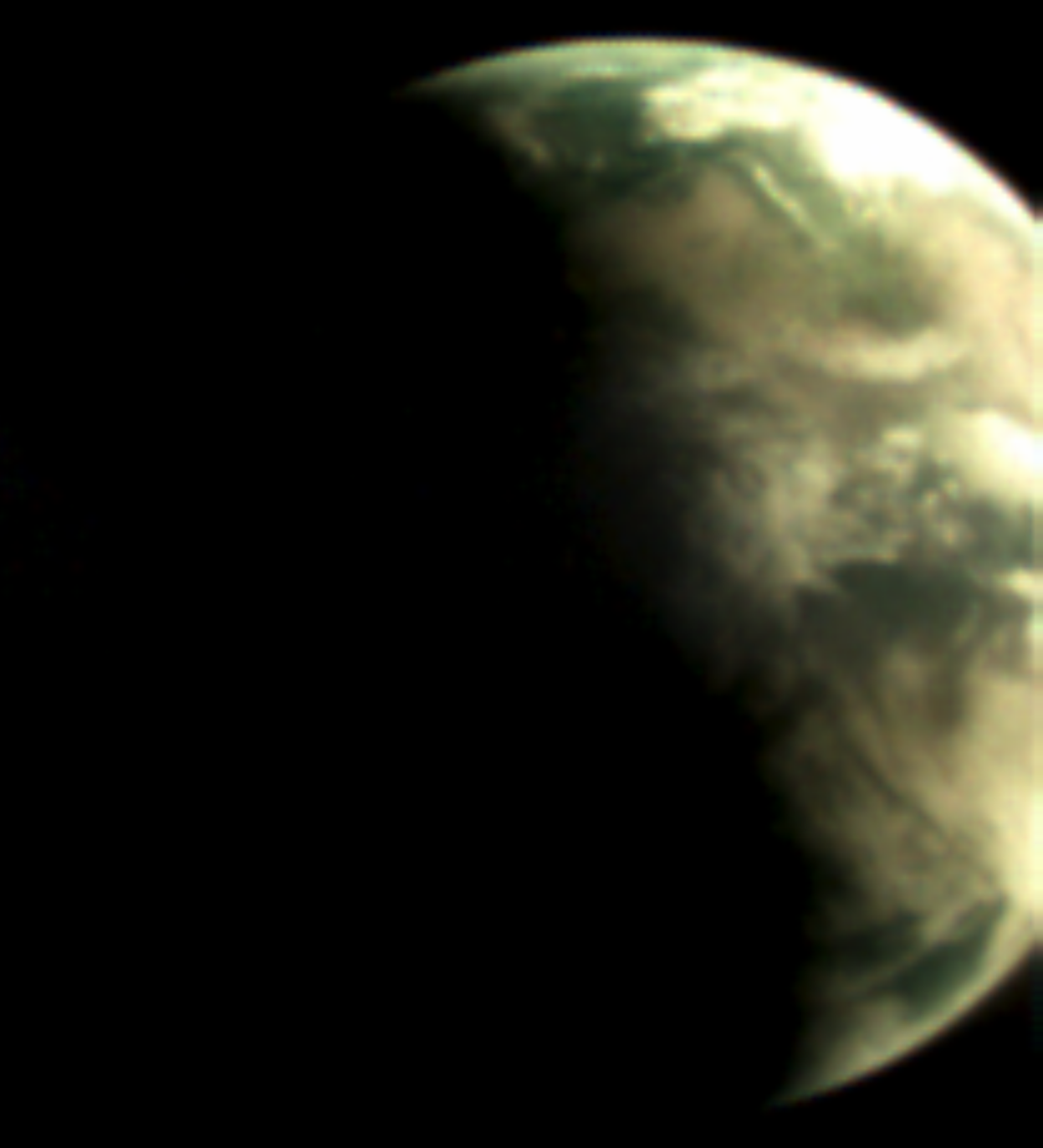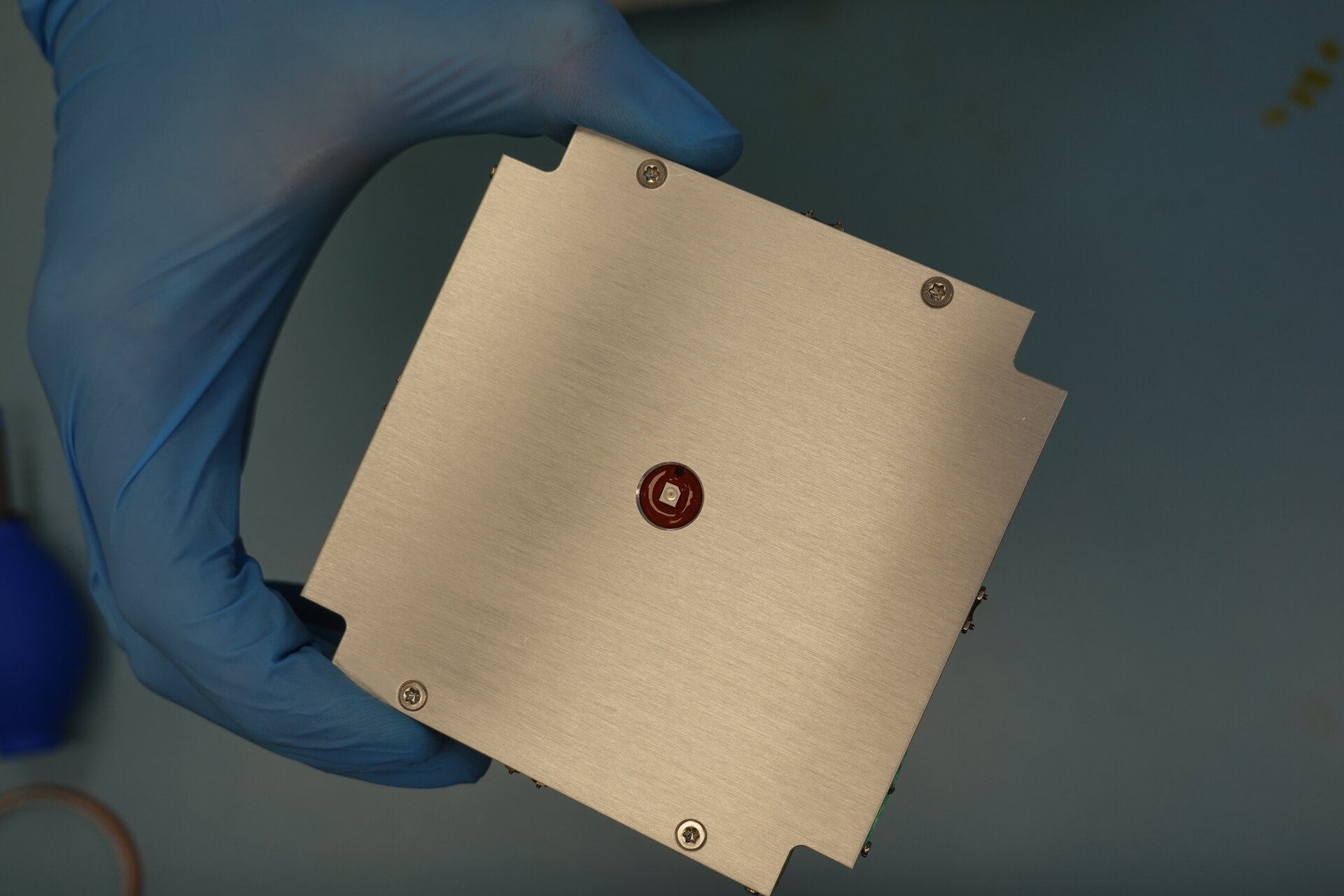The new image of the Earth may not seem too expressive and exciting at first glance. But if you understand the details, then you will be fascinated by this photo.

The image of our planet was taken from a height of about 6 thousand kilometres using a tiny camera equal in size to the edge of a 20-euro cent coin, e.g. only 2.14 millimetres.
This tiny camera is mounted on the European Space Agency’s (ESA) TRISAT-R CubeSat satellite. Its lens is made of transparent borosilicate glass, which protects it from radiation and cosmic rays. The lens is attached directly to the image sensor, which has a resolution of 320 x 320 pixels.
The head of the TRISAT-R project, Iztok Kramberger from the University of Maribor in Slovenia, explained that this camera managed to capture the Earth from a distance of several thousand kilometres.
The TRISAT-R satellite is Slovenia’s second space mission. Launched last year by the European Vega-C launch vehicle, it went into orbit with an apogee of 6 thousand km. This orbit runs through the ionosphere and the inner radiation belt of Van Allen.

The resulting image has a low resolution, because these miniature cameras are not designed for a detailed study of the Earth’s surface. The satellite uses these tiny cameras together with magnetic rods to monitor its position in space.
The main goal of the team is to record examples of the “Black Sun effect”, a common problem of digital images on Earth. This is when pixels become oversaturated, causing extremely bright areas to look dark instead. “We have succeeded in these investigations, but have also been lucky enough to acquire images like these,” adds Iztok Kramberger.
It is important to note that the “Black Sun effect” is also observed in the images of the James Webb Space Telescope, where image processors correct the black central region of bright stars with white pixels.
Earlier we reported how Lucy showed a stunning view of the Earth from a distance of 620 thousand km.
According to esa.int
Follow us on Twitter to get the most interesting space news in time
https://twitter.com/ust_magazine

